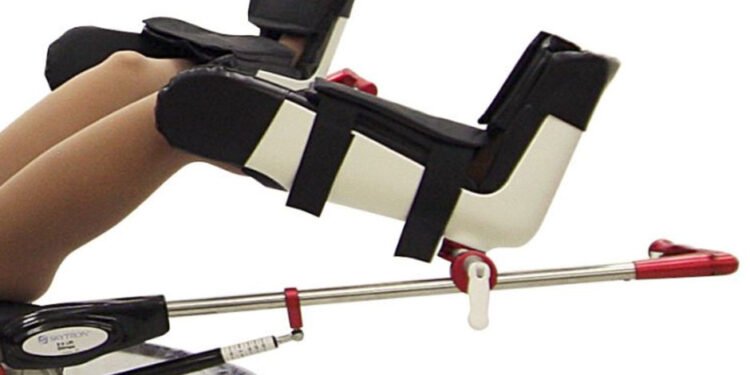Surgical procedures require precision, efficiency, and patient safety at every step. One of the most critical yet often overlooked components of the operating room setup is surgical stirrups. These devices play a vital role in ensuring proper patient positioning during various procedures, from gynecological and urological surgeries to laparoscopic and orthopedic interventions. Choosing the right surgical stirrups can enhance surgical outcomes, reduce the risk of patient injuries, and improve overall workflow in the operating room.
As a surgeon, your practice depends on equipping your team with the right tools to support optimal patient care. This guide will provide key insights to help you select the best surgical stirrups tailored to your needs.
Understanding Surgical Stirrups
Surgical stirrups are positioning devices designed to secure a patient’s legs and ensure proper access to the surgical site. They come in various designs and configurations, each intended for specific procedures. The choice of surgical stirrups affects not only patient comfort but also the surgical team’s ability to perform the procedure effectively.
Key considerations when selecting surgical stirrups include:
- Compatibility with operating tables
- Procedure-specific requirements
- Ease of use and adjustability
- Patient safety features
The Importance of Proper Patient Positioning
Patient positioning in surgery serves two primary purposes: ensuring access to the surgical site and maintaining patient safety. Improper positioning can result in complications such as nerve damage, pressure ulcers, or circulatory issues. High-quality surgical stirrups minimize these risks by offering secure, ergonomic support for patients while enabling surgeons to operate without restrictions.
Factors to Consider When Choosing Surgical Stirrups
1.Type of Procedures Performed
The nature of your practice and the types of surgeries you perform will largely dictate your choice of surgical stirrups. Here’s a breakdown of common stirrup types based on procedural requirements:
- Lithotomy Stirrups: Designed for gynecological, urological, and colorectal procedures, these stirrups provide adjustable leg support and optimal access to the pelvic region.
- Knee Crutches: Often used in orthopedic and lower-limb surgeries, knee crutches provide additional support for procedures requiring precise leg positioning.
- Boot-Style Stirrups: These stirrups secure the entire lower leg and are ideal for long-duration surgeries. They offer enhanced stability and reduce pressure points.
Matching the stirrup design to the procedure ensures patient safety and ease of use for the surgical team.
2.Weight Capacity and Patient Diversity
Surgical stirrups must accommodate patients of varying body types, from pediatric to bariatric cases. Check the weight capacity and adjustability range of stirrups to ensure they can safely support all patients. Bariatric surgical stirrups are essential for practices with a diverse patient population, offering higher weight limits and broader leg positioning options.
3.Ergonomics and Adjustability
A surgeon’s perspective emphasizes the importance of ergonomic design, as this affects both patient comfort and surgical precision. Look for stirrups that feature:
- Height adjustments
- Rotation capabilities
- Angulation controls
These features allow quick and precise adjustments during surgery, minimizing the time required for setup and enhancing the surgical team’s workflow.
4.Material and Durability
The materials used in surgical stirrups affect their longevity, ease of cleaning, and resistance to wear. Common materials include:
- Stainless Steel: Highly durable and resistant to corrosion.
- Aluminum: Lightweight yet strong, ideal for easier maneuverability.
- Plastic Coatings: Added for patient comfort and protection against pressure points.
Investing in high-quality materials reduces long-term costs by minimizing the need for frequent replacements.
5.Safety Features
Patient safety is paramount when selecting surgical stirrups. Look for these safety-enhancing features:
- Padding and Cushioning: Protects against pressure sores and nerve compression.
- Locking Mechanisms: Ensures secure positioning to prevent unintended movement.
- Quick-Release Systems: Facilitates rapid adjustments in emergency situations.
A focus on safety minimizes the risk of intraoperative injuries and ensures compliance with surgical standards.
6.Compatibility with Your Operating Table
Not all surgical stirrups are universally compatible with every operating table. Verify that the stirrups can be securely attached to your table without requiring extensive modifications. Universal clamp systems are a versatile option, as they allow compatibility with multiple table models.
7.Infection Control
Infection control is a critical aspect of surgical equipment. Stirrups with removable, washable covers or antimicrobial surfaces can help reduce the risk of cross-contamination. Ensure the design allows for thorough cleaning and sterilization between uses.
8.Budget and Long-Term Value
While cost is always a consideration, it’s essential to balance initial investment with long-term value. High-quality surgical stirrups may have a higher upfront cost but often provide better durability, safety, and functionality, reducing maintenance and replacement expenses over time.
Popular Surgical Stirrup Options
Here are some of the most commonly used surgical stirrup models, along with their specific advantages:
Allen Yellofins® Stirrups
- Features: Boot-style design with ergonomic adjustments and quick-release levers.
- Best For: Gynecological and urological surgeries.
- Weight Capacity: Up to 500 lbs.
SchureMed Lithotomy Stirrups
- Features: Wide range of adjustments and padded leg supports.
- Best For: Colorectal and general surgeries requiring lithotomy positioning.
- Weight Capacity: Up to 600 lbs.
Biodex Knee Crutches
- Features: Durable stainless-steel construction and enhanced knee support.
- Best For: Orthopedic procedures and lower-limb surgeries.
- Weight Capacity: Up to 400 lbs.
By understanding each model’s strengths, you can select surgical stirrups that meet your practice’s unique needs.
Tips for Maintaining Surgical Stirrups
Proper maintenance ensures that your surgical stirrups remain reliable and safe over time. Follow these tips to extend their lifespan:
- Inspect Regularly: Check for signs of wear, such as loose joints or compromised padding.
- Clean After Every Use: Use hospital-grade disinfectants and follow manufacturer guidelines for sterilization.
- Service Annually: Schedule professional maintenance to ensure all components are in optimal working condition.
The Role of Surgical Stirrups in Patient Outcomes
As a surgeon, you understand that every decision in the operating room affects patient outcomes. Properly selected surgical stirrups not only improve access to the surgical site but also protect patients from positioning injuries. Additionally, high-quality stirrups enhance the efficiency and confidence of your surgical team, creating a safer and more productive environment.
Conclusion
Choosing the right surgical stirrups for your practice involves balancing patient safety, procedural needs, and equipment functionality. By considering factors such as adjustability, material durability, weight capacity, and compatibility with your operating table, you can ensure that your investment supports optimal surgical outcomes.
Remember, surgical stirrups are more than just positioning devices; they’re a critical component of delivering high-quality care. Equip your practice with the best tools to provide patients with the safest and most effective surgical experiences.












